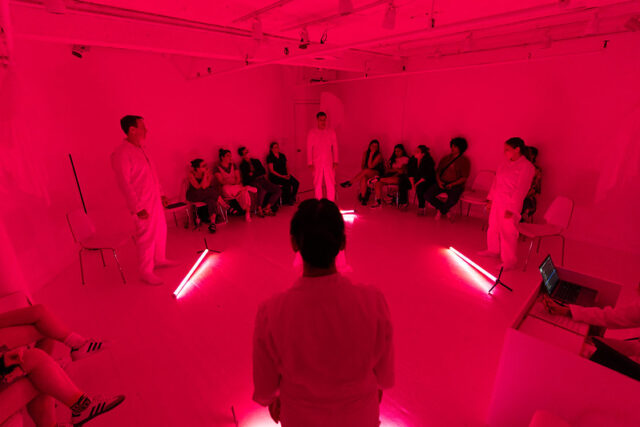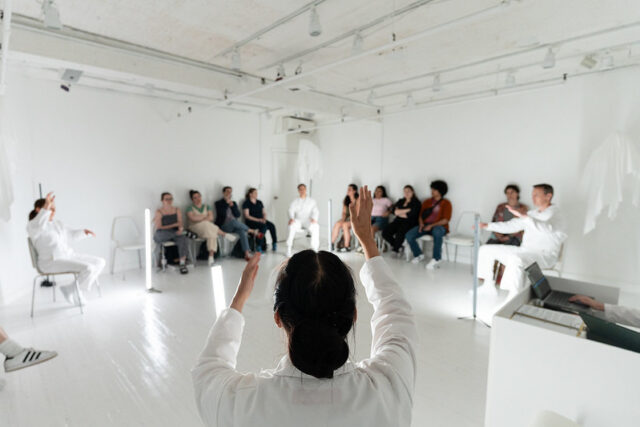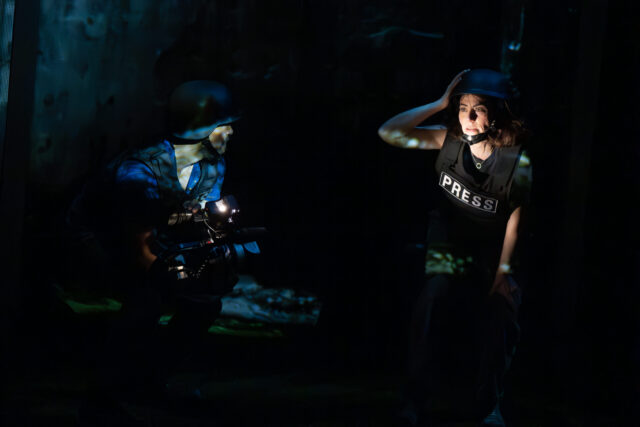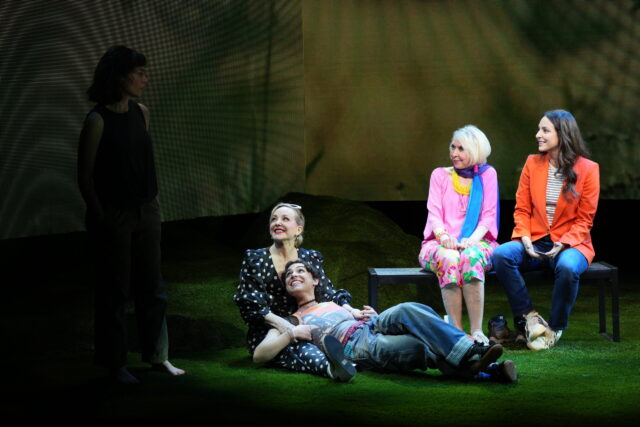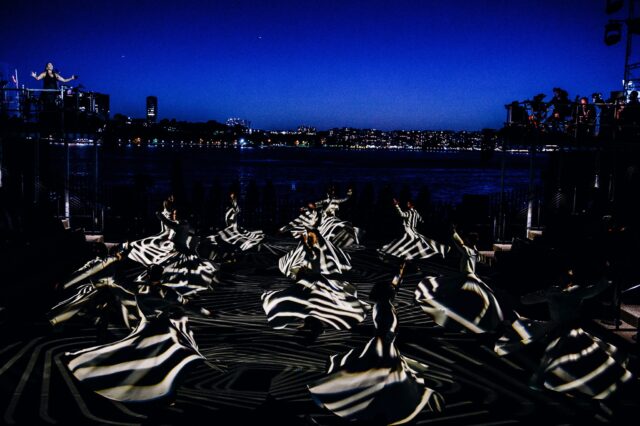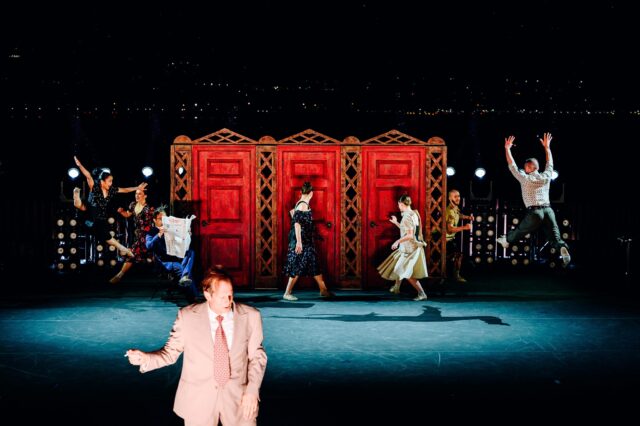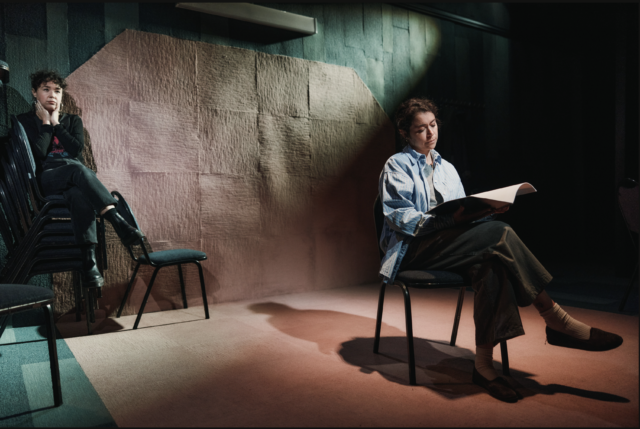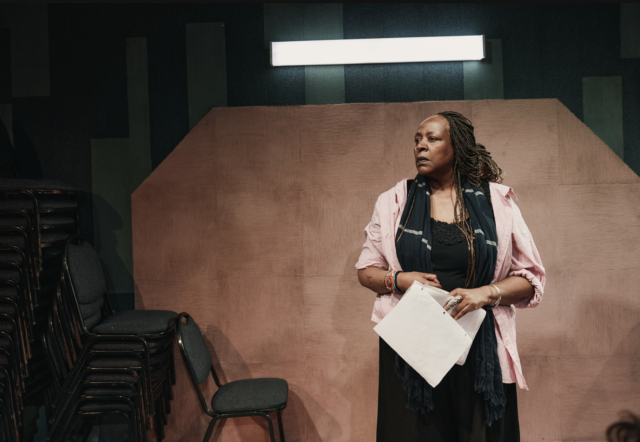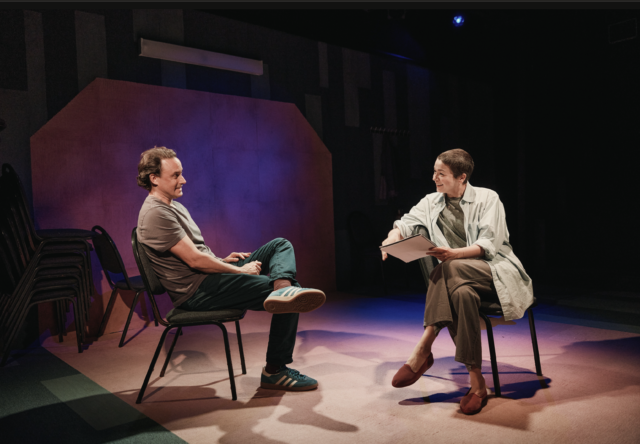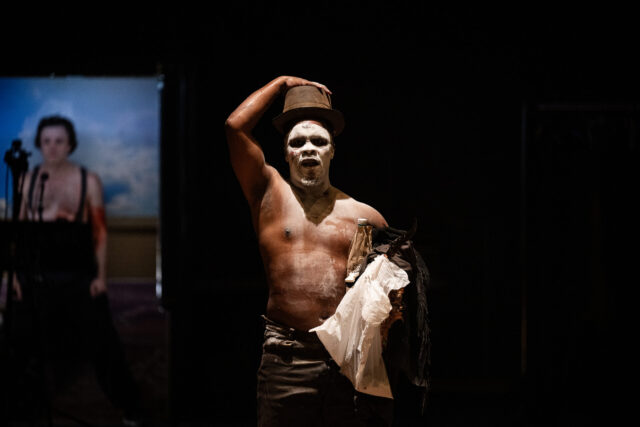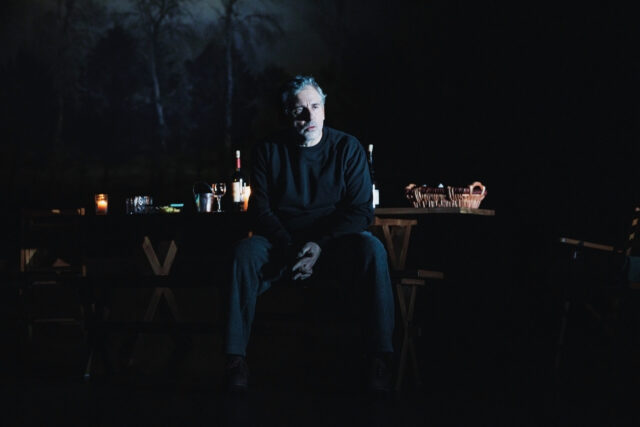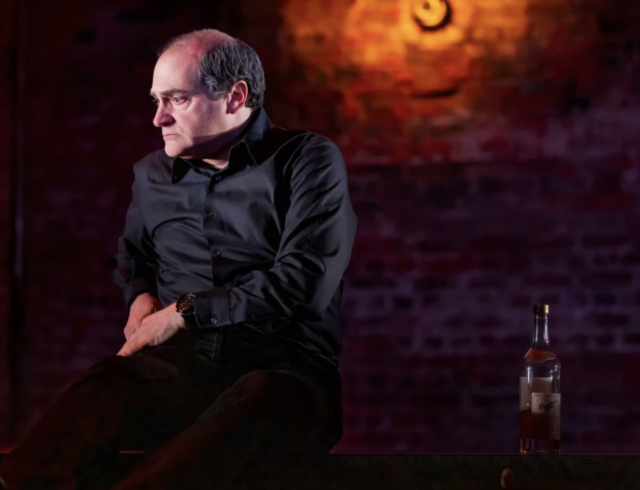
André De Shields makes the grandest of grand entrances as Old Deuteronomy in Cats: The Jellicle Ball (photo by Matthew Murphy)
CATS: “THE JELLICLE BALL”
Perelman Performing Arts Center (PAC NYC)
251 Fulton St.
Tuesday – Sunday through September 8, $68-$309
pacnyc.org
The Pride celebration of the summer and, hopefully, beyond is happening seven times a week at PAC NYC, where Zhailon Levingston and Bill Rauch’s electrifying reimagining of Andrew Lloyd Webber’s Cats — yes, that Cats — is running now through September 8, not quite forever, but not bad.
I have never before seen Cats, in any version — not the original 1982–2000 musical (which won seven Tonys and a Grammy), the 1998 film version, the 2016 Broadway revival, or the 2019 movie that not even Taylor Swift could save (and earned six Golden Raspberries). I haven’t read T. S. Eliot’s 1939 source book, Old Possum’s Book of Practical Cats, either. When I told two friends of mine, longtime Cats haters, that I was going to The Jellicle Ball, they looked at me like they’d rather watch paint dry. Which is unfortunate for them, because Cats: “The Jellicle Ball” is an absolute blast.
Rachel Hauck has transformed the John E. Zuccotti Theater into a fashionable immersive ball, with a central catwalk, the audience sitting on three sides, and cabaret tables along the runway. A DJ (Capital Kaos) finds a dusty copy of the Cats soundtrack and puts it on, a clever nod to the original. Munkustrap (Dudney Joseph Jr.), the master of ceremonies, keeps things moving at a fast pace. The crowd is encouraged to be loud, and they hoot and holler as a cast of nearly two dozen parade up and down and all around the space, looking fabulous in Qween Jean’s spectacular costumes, which range from fluffy and colorful to raw and raunchy, from playful and funny to sexy and scary, topped off by Nikiya Mathis’s outrageous hair and wigs. Adam Honoré sprays colored spotlights across the room and incorporates a disco ball, while sound designer Kai Harada turns up the volume. Brittany Bland’s projections take us from day to night with cool visuals and pay tribute to early BIPOC LGBTQIA+ heroes.
Arturo Lyons and Omari Wiles meld hip-hop and queer Ballroom culture into their vibrant choreography, with touches of traditional musical theater, since, of course, this is still Cats, following the same structure as the original and making very few tweaks to the story and lyrics; there are nods to Jennie Livingston’s 1990 documentary Paris Is Burning, the television series Pose and RuPaul’s Drag Race, The Wiz, and a dash of Hair in its throwback counterculture vibe.
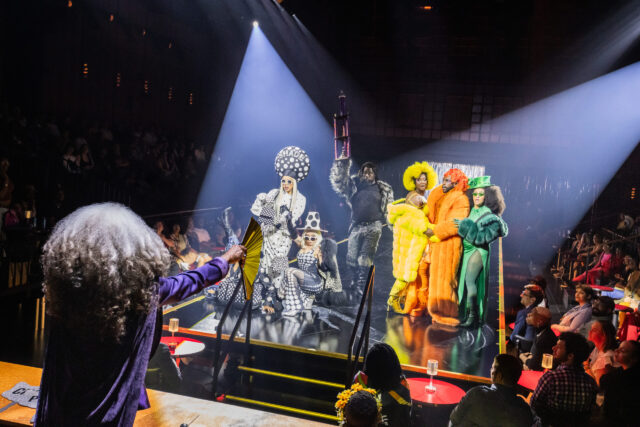
Cats: The Jellicle Ball is an intoxicating mélange of music and movement (photo by Matthew Murphy)
At the Jellicle Ball, dancers compete for trophies in such categories as Old Way vs. New Way, Voguing, Opulence, Hair Affair, and Butch Queen Realness. The preliminaries are judged by two people selected from the audience — and clearly chosen because of their wild outfits. (A few brought handheld fans, knowing just when to snap them open to match what was happening onstage.)
But it’s Old Deuteronomy (André De Shields) who will decide which furry feline will ascend to the Heaviside Layer. Among those making their case for top cat are Victoria (Baby), cat burglars Mungojerrie (Jonathan Burke) and Rumpleteazer (Dava Huesca), the curious Rum Tum Tugger (Sydney James Harcourt), virgin voguer Electra (Kendall Grayson Stroud), the mysterious Macavity (Antwayn Hopper), and housemother Jennyanydots (Xavier Reyes).
Emma Sofia stands out as Cassandra and Skimbleshanks, shaking the joint as an MTA conductor in “The Railway Cat.” Robert “Silk” Mason is in full glory mode as the conjurer Magical Mister Mistoffelees. Ballroom icon “Tempress” Chasity Moore brings heart and soul to Grizabella, the formerly glamorous gata who now lives off the street, delivering a powerful “Memory.” And Ballroom legend and Paris Is Burning emcee Junior LaBeija — the inspiration for Billy Porter’s Pose character, Pray Tell — gets duly honored as Gus the theater cat, carried out in a makeshift throne as he sings his eponymous song. LaBeija is one of numerous Trailblazers whose brief bios can be found on panels in the hall surrounding the theater, including Dorian Carey, Pepper LaBeija, Octavia St. Laurent, and Rauch.
But this is André De Shields’s world; we only live in it. The Tony, Obie, and Grammy winner (Hadestown, Ain’t Misbehavin’) makes the grandest of grand entrances, emerging from behind a glittering doorway and suddenly appearing before us in a plush purple suit and a lionlike cloud of silver, purple, and white hair, marking him as King of Pride. He floats slowly down the catwalk, basking in the tremendous adoration and adulation, then takes his royal seat at the end, a uniquely supreme being who is the ultimate judge of us all.
The music is performed by a crack eight-piece band: conductor Sujin Kim–Ramsey, Lindsay Noel Miller, and Eric Kang on keyboards, Justin Vance and Amy Griffiths on reeds, Andrew Zinsmeister on guitars, Calvin Jones on electric bass, and Clayton Craddock on drums, bringing funk and plenty of ’70s synth pop to the score, under William Waldrop’s direction.
Of course, this is still Cats, so not everything makes sense — what does “jellicle” even mean? — a few elements are repeated, and utter mayhem threatens at any second in this ferocious production, which is as unpredictable and entertaining as, well, cats.
[Mark Rifkin is a Brooklyn-born, Manhattan-based writer and editor; you can follow him on Substack here.]
